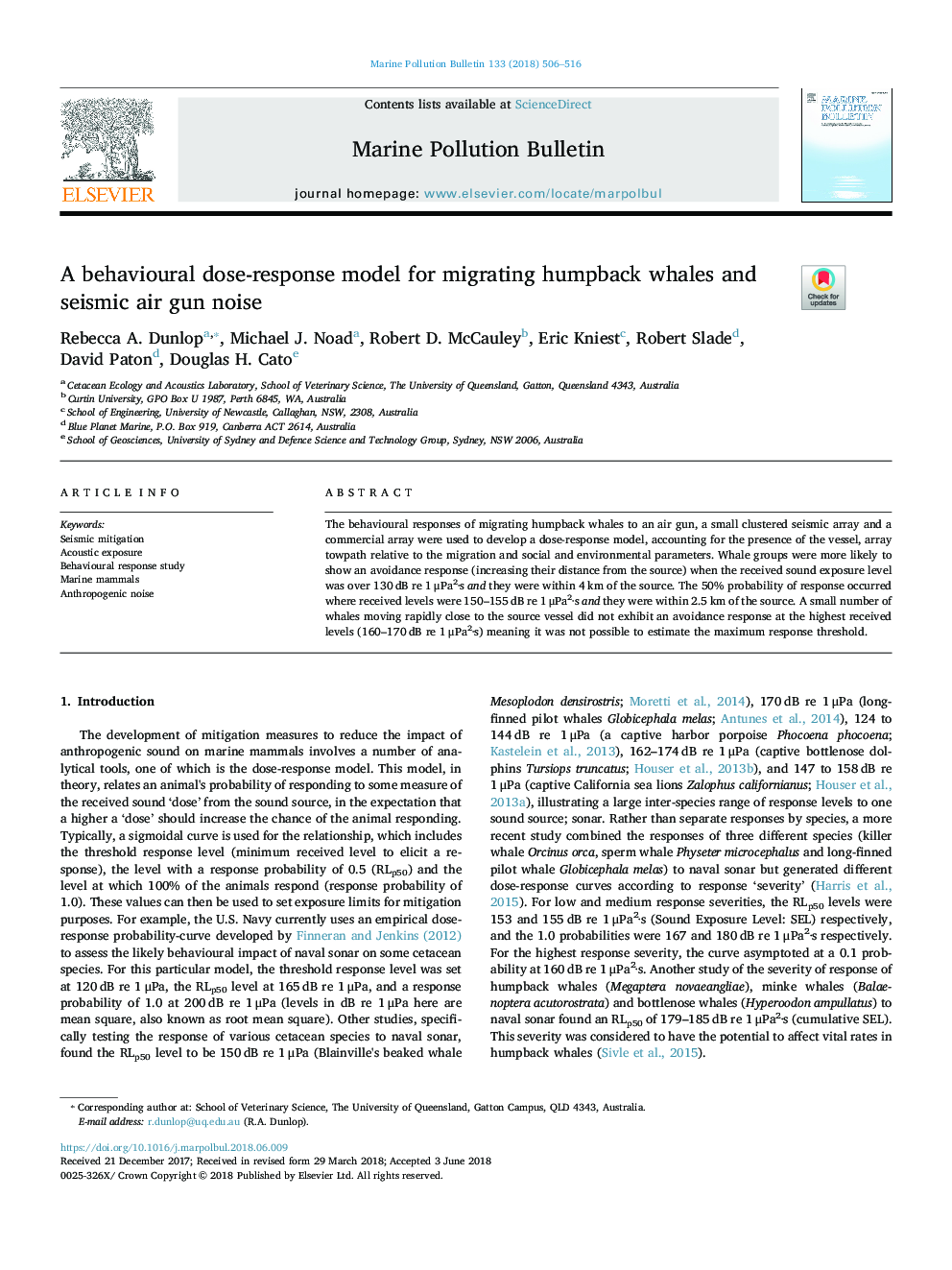| Article ID | Journal | Published Year | Pages | File Type |
|---|---|---|---|---|
| 8871066 | Marine Pollution Bulletin | 2018 | 11 Pages |
Abstract
The behavioural responses of migrating humpback whales to an air gun, a small clustered seismic array and a commercial array were used to develop a dose-response model, accounting for the presence of the vessel, array towpath relative to the migration and social and environmental parameters. Whale groups were more likely to show an avoidance response (increasing their distance from the source) when the received sound exposure level was over 130â¯dB re 1â¯Î¼Pa2·s and they were within 4â¯km of the source. The 50% probability of response occurred where received levels were 150-155â¯dB re 1â¯Î¼Pa2·s and they were within 2.5â¯km of the source. A small number of whales moving rapidly close to the source vessel did not exhibit an avoidance response at the highest received levels (160-170â¯dB re 1â¯Î¼Pa2·s) meaning it was not possible to estimate the maximum response threshold.
Related Topics
Physical Sciences and Engineering
Earth and Planetary Sciences
Oceanography
Authors
Rebecca A. Dunlop, Michael J. Noad, Robert D. McCauley, Eric Kniest, Robert Slade, David Paton, Douglas H. Cato,
